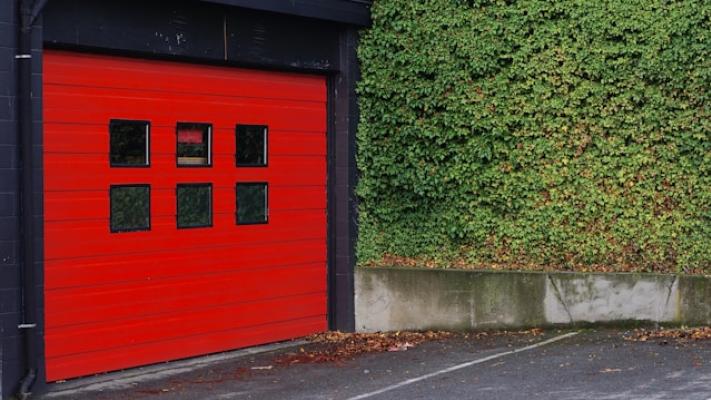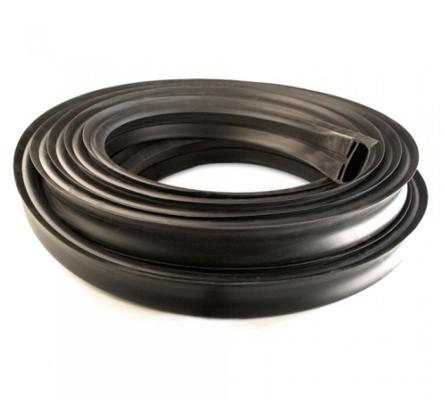How To Draught Proof A Garage Door - A Complete Guide
Having a draught-proof garage door is a simple yet effective way to improve the energy efficiency of your home, reduce heating costs and keep your garage feeling comfortable. Whether you use your garage as a workshop, an office or for storage, preventing cold air, pests and dust from getting inside is essential. In this guide, we’ll explain the benefits of draught proof garage doors, types of garage door draught proofing and details of how to fit these seals
What Are the Benefits of Garage Door Draught Proofing?
Draught-proof garage doors help to create a more energy-efficient home by stopping cold air from infiltrating your garage, especially if it’s attached to the house. By sealing garage doors, you can reduce the amount of heat loss and potentially lower your heating bills. Draught-proofing also keeps your garage warmer, which is particularly useful if you use it for hobbies, as a home gym, or as a workspace. Beyond temperature control, fitting a garage door draught excluder prevents dust, leaves and even pests from entering through gaps, keeping your space cleaner and more functional.
Types Of Garage Door Draught Excluders
Depending on where the draught is coming from, there are a few types of garage door draught excluders you can use to properly seal garage door gaps. Here are some of the types of garage door draught proofing you may need:
Garage Door Multiseals
Garage door multi seals are flexible rubber seals used to close small gaps at the top, bottom and sides of the door. These draught proofing strips are easy to install and are fitted with strong adhesive tape.
Garage Door Threshold Seals
Sometimes called garage door floor seals or rubber floor seals, garage door threshold seals are perfect for preventing cold air from entering under the garage door. Rubber floor seals are applied to the floor where the door meets the ground, offering extra protection from draughts.
Garage Door Brush Strips
Easy-to-install garage door brush strips feature stiff bristles made from robust nylon. Brush strips are applied along the bottom of the door to block draughts while allowing the door to open and close smoothly.
How Do I Draught Proof My Garage Door?
If you're wondering 'How do I stop cold air coming through my garage door', there is a simple solution. Luckily installing garage door draught proofing is an easy process. Here's how you fit different types of garage door draught excluders
Inspect the Garage Door for Draughts
Before starting, identify where the draughts are coming from. Stand inside your garage on a windy day or at night with a flashlight and check for visible gaps. Focus on the bottom, sides, top, and any sections between panels if you have a sectional door.
Install Garage Door Multi Seals
If you find gaps along the top and sides, measure the garage door and cut your multi seal to fit. Remove any old or worn seals before attaching the new one. You can use screws in addition to adhesive strips for an extra strong hold. This will seal the gaps at the sides and the top, preventing draughts from entering around the garage door. You can read more details about fitting garage door multi seals in our fitting guide.
Install a Threshold Seal
For gaps under the door, a threshold seal or rubber floor seal provides extra protection by creating a barrier on the floor where the garage door closes. To install, clean the area, apply adhesive to the threshold seal, and press it firmly onto the floor along the length of the door. This is particularly useful for uneven surfaces. You can find step-by-step details for installing a rubber floor seal in this fitting guide.
Apply Garage Door Brush Strips to the Bottom of the Door
Brush strips are effective for sealing gaps at the bottom of the garage door. Measure the length needed, then attach the strips using screws. Brush strips not only block draughts but also stop dust and pests from entering while allowing the door to move freely. Check our step-by-step instructions for more details about fitting garage door brush strips.
Tips For Maintaining A Draught Proof Garage Door
Once you have taken steps to seal gaps and prevent draughts, there are a few more things you can do to enhance the effectiveness of your garage door weather stripping. Here are a few additional tips for maintaining a draught proof garage door.
- Regular Maintenance - Regularly inspect your threshold seal, brush strips and other draught-proofing materials. Over time, these can wear out, so replacing them as needed is crucial for long-term effectiveness.
- Check Garage Door Insulation - Consider adding insulation to the door itself, especially if your garage is connected to the house. Insulated garage doors help reduce heat loss and improve the thermal efficiency of your home.
- Check Ventilation - While sealing draughts is important, you’ll need to ensure your garage has proper ventilation to prevent condensation and dampness, especially if you store vehicles or equipment.
Garage Door Draught Excluders From Ja Seals
At JA Seals, our range of garage door draught excluders allows you to stop cold air from entering your garage, and keep your garage comfortable and draught-free all year long. Whether you need a garage door bottom seal or draught proofing strips to seal the sides and top of your garage door, our range of garage door seals has what you need. If you’d like more information, contact our team today.
Visit the JA Seals Ltd website for more information on How To Draught Proof A Garage Door - A Complete Guide




